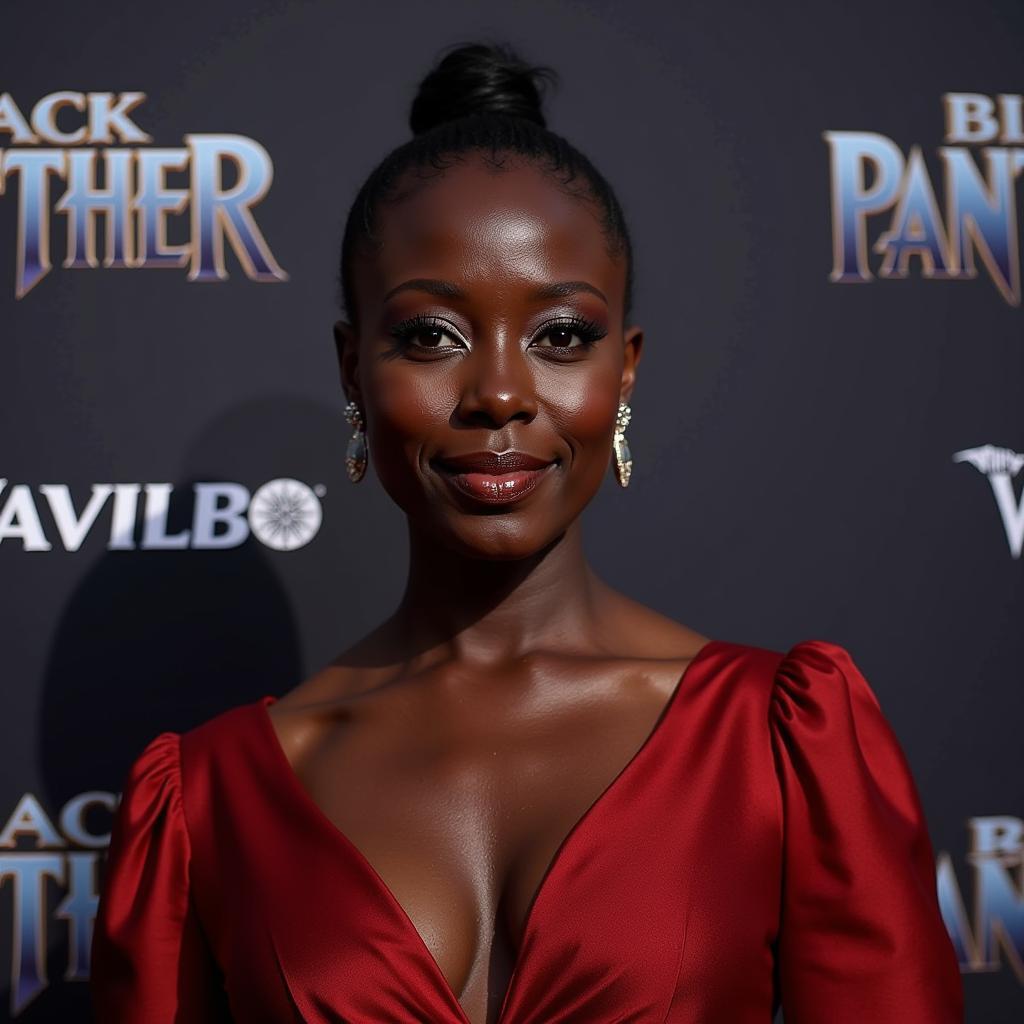A Vibrant Tapestry: Exploring African Fashion Styles
African Fashion Styles are a vibrant tapestry of colors, textures, and traditions, reflecting the continent’s rich cultural heritage and contemporary influences. More than just clothing, these styles are a powerful form of self-expression, storytelling, and celebration. From the intricate beadwork of the Maasai to the flowing boubous of West Africa, each region boasts unique fashion elements that have captivated the world.
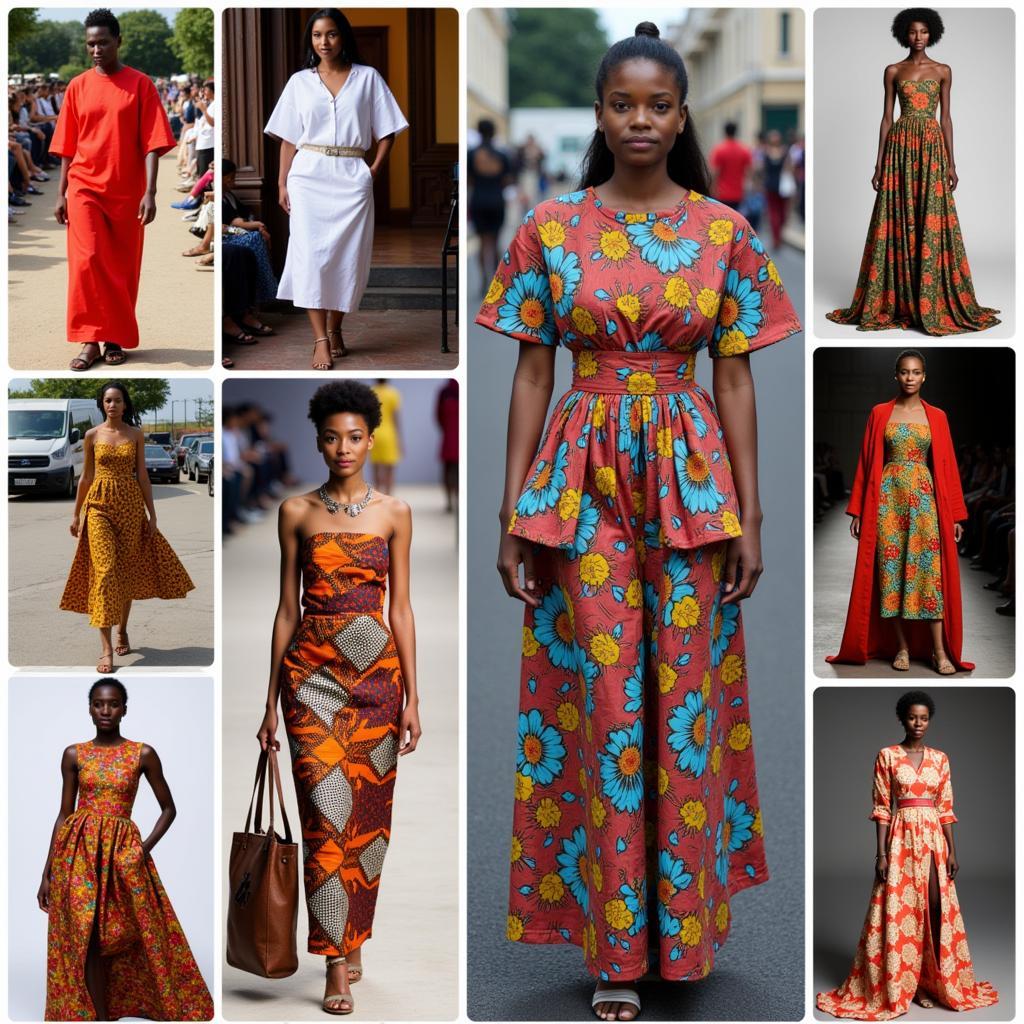 Vibrant African Fashion Styles
Vibrant African Fashion Styles
A Fusion of Tradition and Modernity
One of the most remarkable aspects of African fashion styles is the seamless blend of traditional aesthetics and modern sensibilities. Designers across the continent are reimagining ancestral craftsmanship and techniques, incorporating them into contemporary designs that resonate with a global audience. This fusion is evident in the use of traditional fabrics like Ankara, Kente, and Aso Oke, which are often combined with modern cuts, silhouettes, and embellishments.
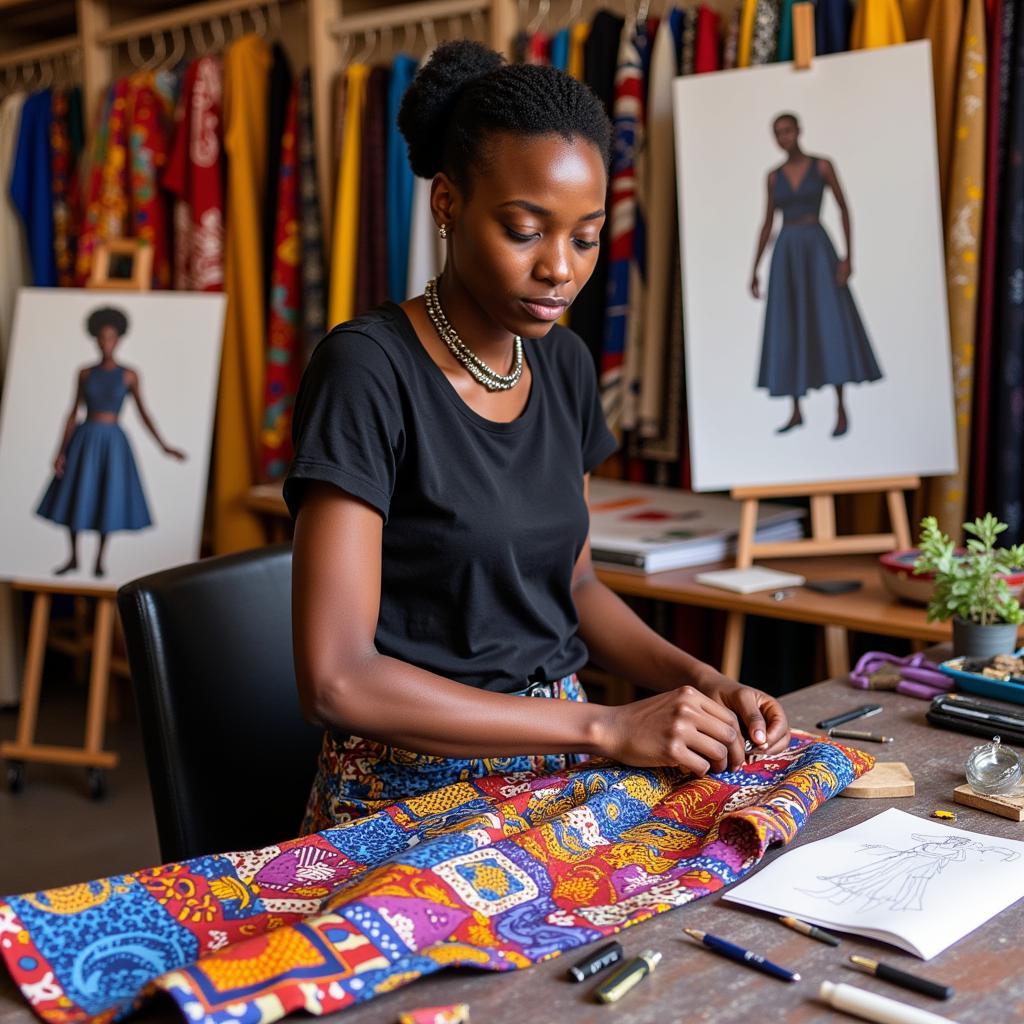 African Fashion Designer at Work
African Fashion Designer at Work
For instance, the iconic Yoruba agbada, a flowing wide-sleeved robe traditionally worn by men in Nigeria, is now reinterpreted into stylish dresses, jumpsuits, and even swimwear. Similarly, the kente cloth, renowned for its intricate geometric patterns and symbolic meanings, is being used to create everything from tailored suits and evening gowns to sneakers and accessories. This harmonious marriage of tradition and modernity has positioned African fashion styles at the forefront of global trends.
Beyond the Runway: The Cultural Significance of African Fashion
African fashion styles are far more than just aesthetically pleasing garments; they hold deep cultural significance and embody centuries-old traditions. Clothing often serves as a marker of identity, reflecting one’s ethnicity, social status, and even marital status. In many African cultures, specific colors, patterns, and accessories hold symbolic meanings and are worn for particular occasions or ceremonies.
For example, the red ochre used to dye the traditional Himba attire in Namibia symbolizes life and fertility, while the elaborate headdresses worn by the Zulu women during ceremonial dances denote their marital status. This intrinsic connection between fashion and culture makes African fashion styles a fascinating lens through which to explore the continent’s diverse heritage.
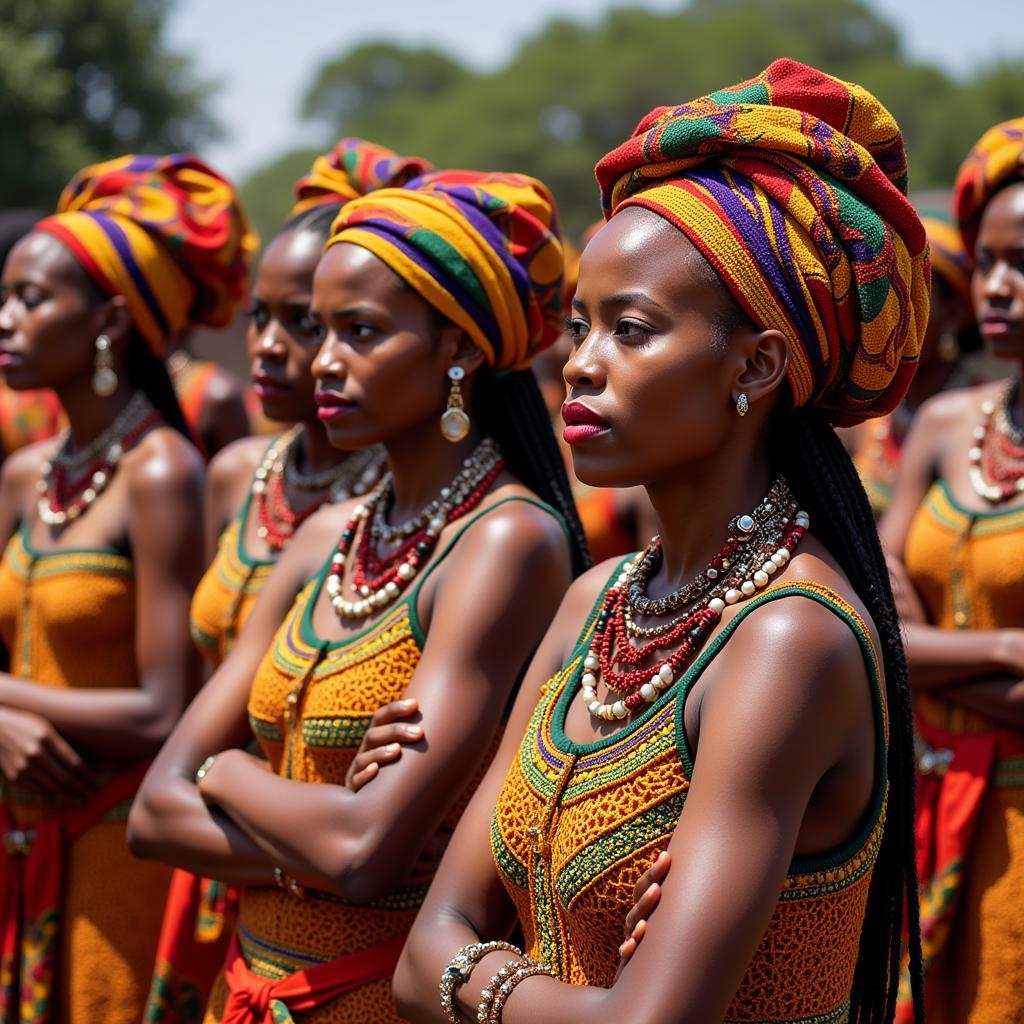 African Women in Traditional Attire
African Women in Traditional Attire
The Global Rise of African Fashion
In recent years, African fashion styles have witnessed an unprecedented surge in global popularity. From international runways and fashion magazines to high-street stores and online platforms, African designers and brands are making their mark on the world stage.
“African fashion is not just a trend; it’s a movement,” says Amina Fadil, a renowned Senegalese fashion designer. “It’s about reclaiming our narrative, celebrating our heritage, and showcasing the creativity and craftsmanship of Africa to the world.”
african fashion styles 2016 witnessed a significant shift as international attention focused on the continent’s burgeoning fashion scene.
This global recognition is not merely a passing trend but a testament to the unique aesthetics, cultural richness, and ethical consciousness that underpin African fashion. Many African designers prioritize sustainability and ethical production practices, working directly with local artisans and utilizing traditional techniques.
Key Influences and Trends
Numerous factors have contributed to the distinctive aesthetic of African fashion styles.
1. Rich Textile Heritage:
Africa boasts a rich tapestry of traditional textiles, each with its own unique history, weaving techniques, and symbolic meanings. From the handwoven kente cloth of Ghana to the vibrantly printed Ankara fabrics of West Africa, these textiles form the backbone of African fashion, adding a touch of cultural significance to contemporary designs.
2. Bold Prints and Patterns:
African fashion styles are renowned for their bold and vibrant prints and patterns. Whether it’s the intricate geometric designs of the kente cloth, the abstract motifs of the bogolanfini (mud cloth) from Mali, or the colorful wax prints of Ankara, these patterns inject a sense of energy and vibrancy into any outfit.
african fashion influences extend beyond textiles, encompassing a wide range of cultural elements and historical events.
3. Vibrant Color Palettes:
Drawing inspiration from the continent’s natural landscapes and cultural traditions, African fashion embraces a vibrant and diverse color palette. From the warm earthy tones of the Sahara Desert to the lush greens of the rainforest and the vibrant hues of tropical fruits and flowers, these colors reflect the continent’s natural beauty and cultural vibrancy.
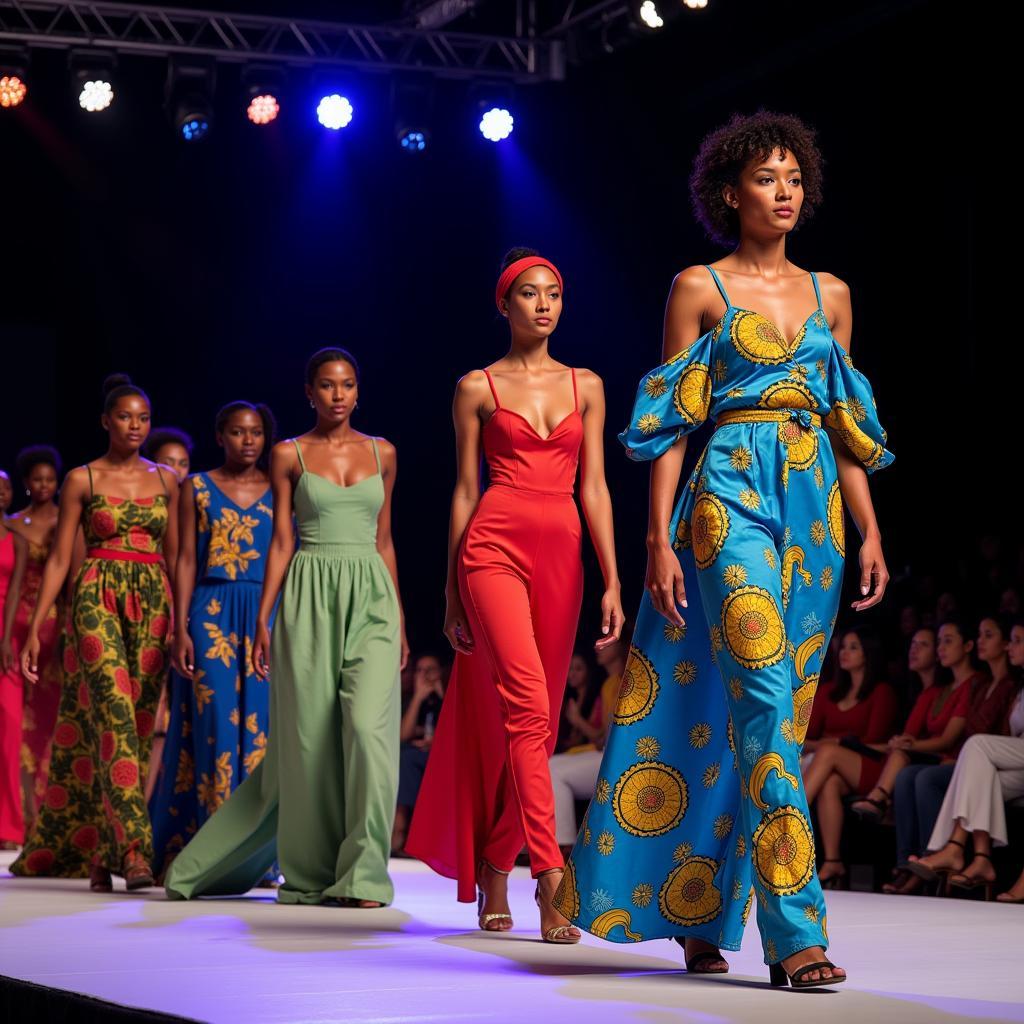 African Fashion Week Runway
African Fashion Week Runway
4. Contemporary Silhouettes:
While deeply rooted in tradition, African fashion is also characterized by its embrace of modern silhouettes and contemporary design aesthetics. Designers across the continent are experimenting with innovative cuts, drapes, and structures, creating fashion-forward pieces that appeal to a global audience.
Exploring African Fashion Styles: A Journey of Discovery
From the intricate beadwork of the Maasai to the flowing boubous of West Africa and the elegant dresses adorned with kente cloth, exploring African fashion styles is a journey of discovery. Each region, each culture, and each designer brings a unique perspective and aesthetic to the world of fashion. As the global spotlight continues to shine on African fashion, we can expect to see even more innovative and inspiring designs that celebrate the continent’s rich cultural heritage and creative spirit.
FAQs about African Fashion Styles:
1. What are some popular African fashion styles?
African fashion styles are incredibly diverse, but some popular ones include the boubou, kente styles, dashiki, agbada, and Herero dresses. Each style has its own unique history and cultural significance.
african bridesmaid dress styles have gained immense popularity for their elegance and versatility, offering a wide range of options for modern weddings.
2. Where can I buy authentic African fashion?
Many online platforms and marketplaces specialize in selling authentic African clothing and accessories. You can also find boutiques and stores in major cities worldwide that carry African fashion brands.
3. How can I incorporate African fashion into my wardrobe?
Start by incorporating small pieces like jewelry, scarves, or bags. You can also try wearing a dashiki shirt or a kente print top with jeans or a skirt. Experiment with different colors, patterns, and styles to find what suits you best.
4. What is the significance of headwraps in African fashion?
Headwraps are an integral part of African fashion and hold deep cultural significance. They are often worn as a symbol of respect, identity, and style. The way a headwrap is tied can vary depending on the culture and occasion, signifying marital status, age, or social standing.
5. How is sustainability reflected in African fashion?
Many African designers are committed to sustainable and ethical production practices. They often work directly with local artisans, use traditional techniques that minimize environmental impact, and source materials locally.
african kaftan styles offer a timeless and elegant fashion choice, and many contemporary designers are incorporating sustainable practices in their creation.
Explore Further:
- Discover the captivating world of African American dress styles and their unique blend of cultural influences.
Need Assistance?
Contact us at:
Phone Number: +255768904061
Email: [email protected]
Address: Mbarali DC Mawindi, Kangaga, Tanzania
Our dedicated customer support team is available 24/7 to assist you.


